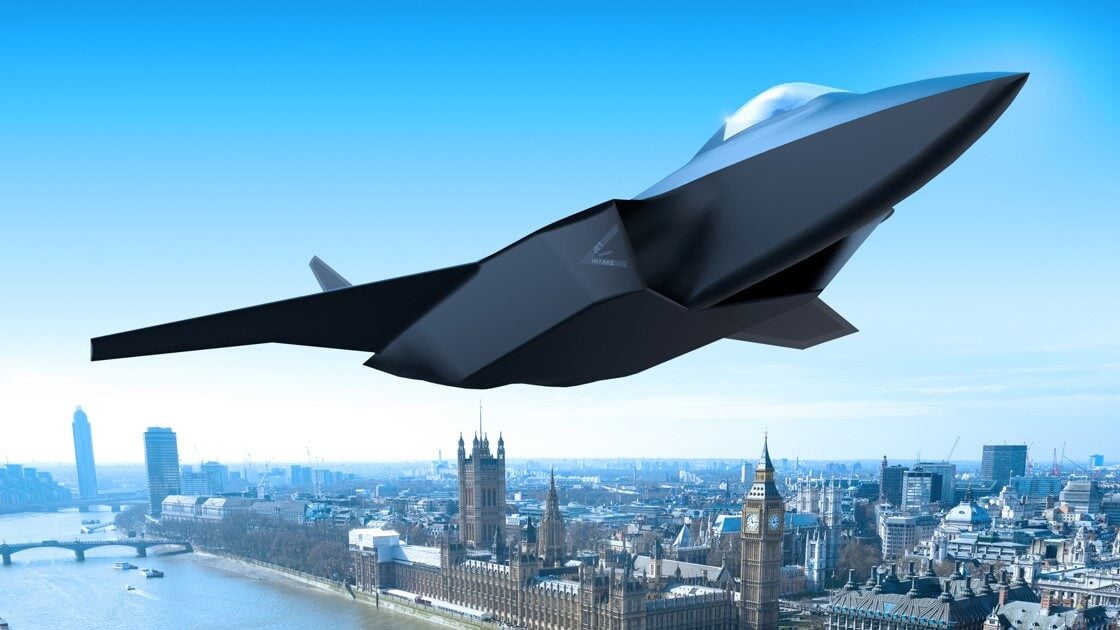
An artist’s impression of the UK-Japanese-Italian Global Combat Air Programme fighter jet (BAE Systems)
DSEI — Industry partners in the Global Combat Air Programme (GCAP) have signed a new agreement for the concept phase for the future fighter and described “significant” technical progress in the trilateral effort.
The collaboration agreement, inked Tuesday between the UK’s BAE Systems, Italy’s Leonardo and Japan’s Mitsubishi Heavy Industries, comes on the back of the joint declaration made by the three governments in Tokyo in December 2022 that stipulated requirements to deliver the future fighter by 2035.
“The [collaboration] agreement reflects positive momentum and strong trilateral cooperation, and will involve the industry partners maturing integration, collaboration and sharing of information towards the next phase of GCAP,” an official statement released by the companies said. “[It] supports ongoing discussions to set out long-term working arrangements and maturity of the concept and capability requirements for the next generation combat aircraft.”
RELATED: No ‘definitive’ timeline for Saudi involvement in GCAP fighter program, UK official says
According to BAE Systems’ managing director for Future Combat Air Systems, Herman Claesen, industry partners have maintained a “high tempo of engagement” since the launch of the program.
Meanwhile, on the same day at DSEI, Leonardo UK, Leonardo Electronics in Italy, ELT Group also of Italy and Mitsubishi Electronics — who had all signed their own collaboration agreement at DSEI Japan in March — confirmed they had passed several system design reviews concerning the development of GCAP’s Integrated Sensing and Non-Kinetic Effects (ISANKE) and Integrated Communications System (ICS).
In their first joint presentation since DSEi Japan in March where the companies signed their own collaboration agreement, the four companies provided a status report on developments to date.
FULL COVERAGE: Breaking Defense at DSEI 2023 in London
Andrew Howard, director of future combat air/GCAP UK at Leonardo UK, said the companies had spent several months assessing a number of alternative operational and commercial models to deliver this capability.
“Over the last few months, the domain partners have also made significant progress on the technical side of the program, with the ISANKE and ICS subsystem passing a three-nation systems review,” Howard said. “This key gate in the ongoing joint concept activity means that the partners have agreed on the high-level design of the ISANKE & ICS sub-system: what will the key blocks of the system be, where will they sit in the aircraft and what will they do?
“Passing this gate has provided more certainty for the direction of research and development work and supports the new combat aircraft going into service in 2035,” he said.
Mitsubishi Electric’s deputy senior general manager, Isamu Suda, confirmed how ISANKE and ICS will comprise a network of sensors sharing data with “capacity to process vast amounts of information.”
“The partners have progressed the development of a number of critical underlying technologies, including in the fields of radar, electro-optics and electronic warfare, that will feed into the overall ISANKE and ICS system,” he added.
An industry source suggested there has been talk that Japan is considering operating its own Flight Test Aircraft, which would augment the UK’s Excalibur test-bed aircraft. The Excalibur will begin evaluating next-generation sub-systems destined for the Royal Air Force’s (RAF’s) sixth-generation “Tempest” combat air demonstrator in 2026.
Leonardo UK’s Howard acknowledged this was an “area of discussion” and said it would “make sense” given time and geographic challenges faced by the consortium.






















